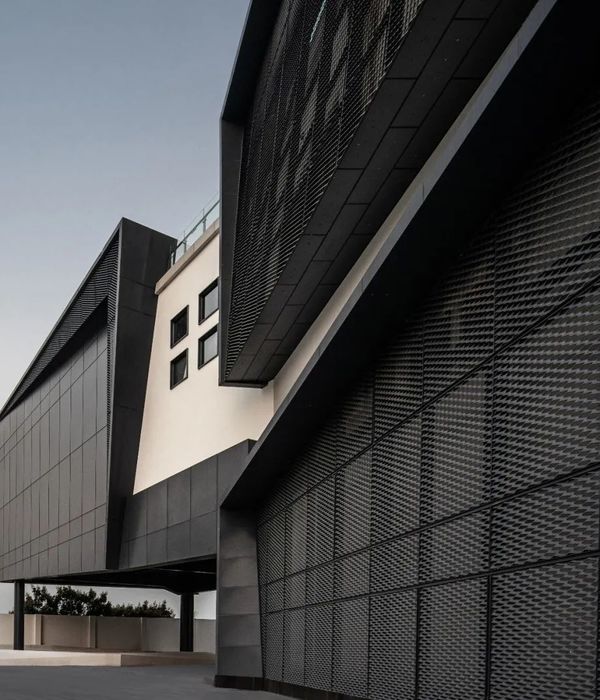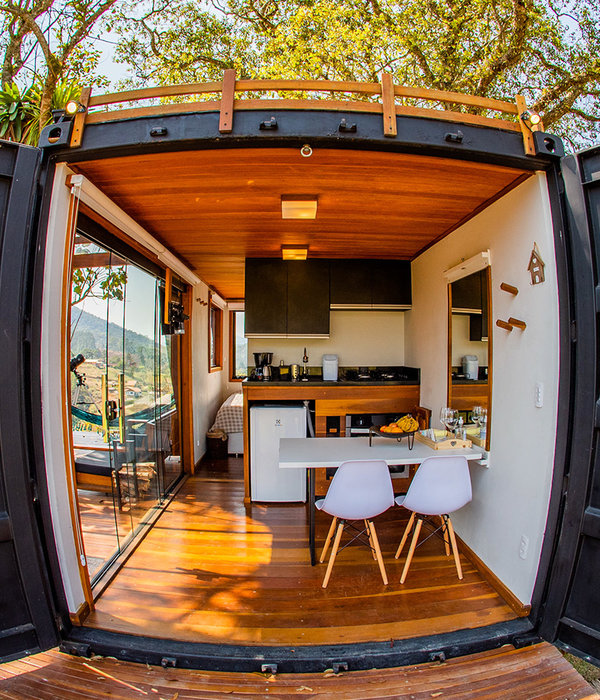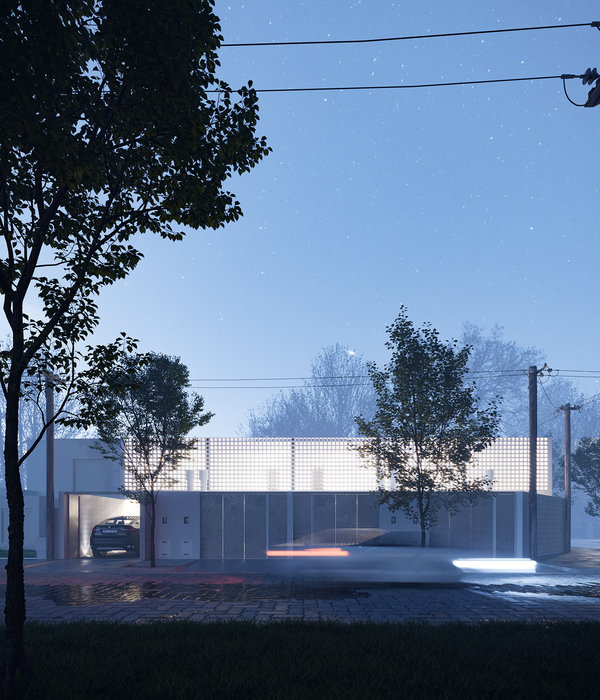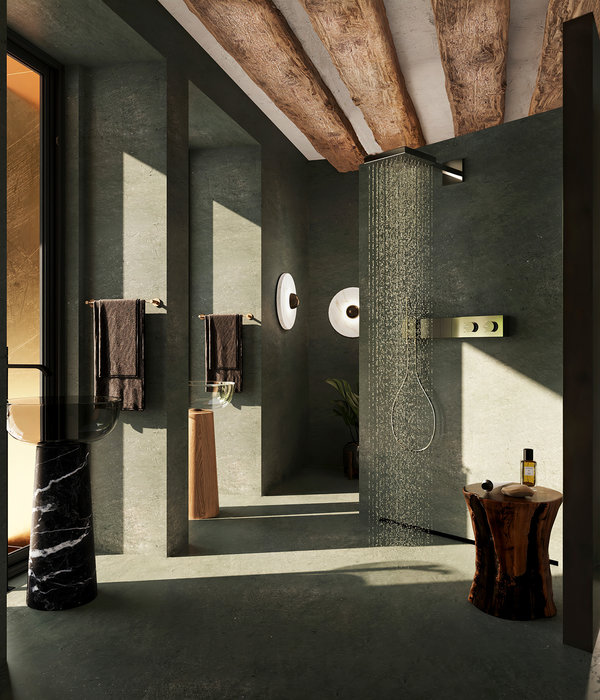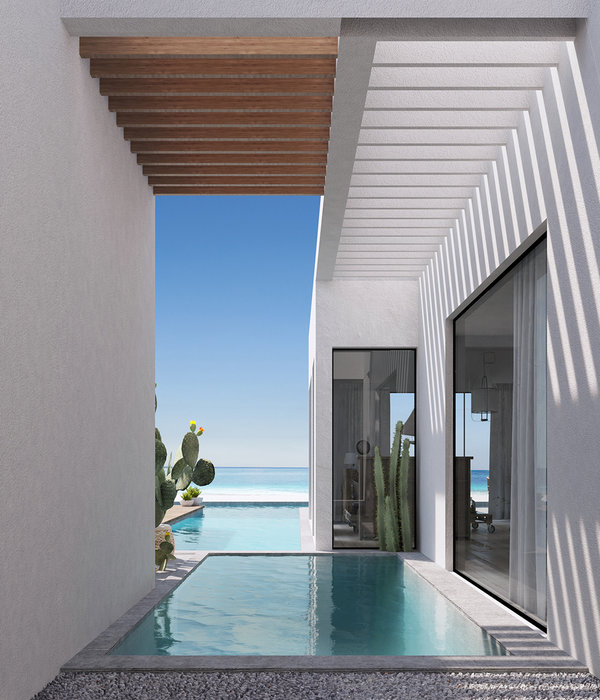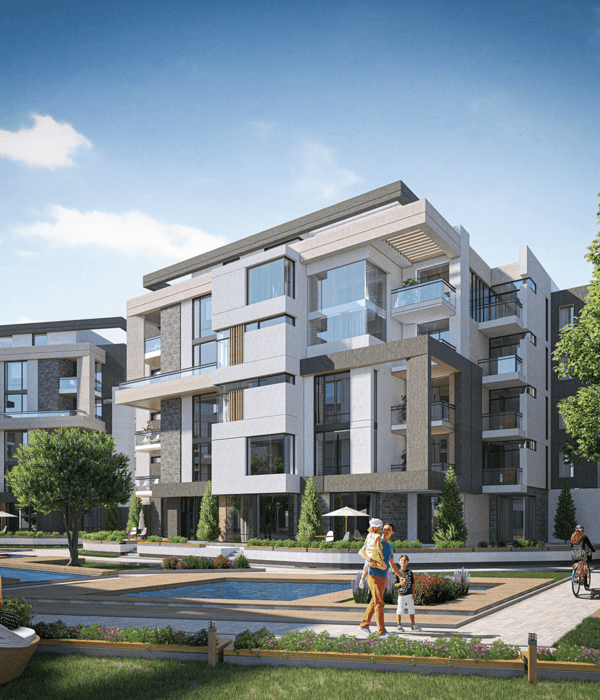This pavilion was designed to be painted...
Conceived of as an inhabitable painting in the shape of a house, the familiar form of the pavilion blurs the surfaces between the walls of a building and the painting displayed upon it.
The shape of the pavilion lends it a recognizable identity as a piece of domestic architecture, in which the art hung on its walls has assumed the identity of the structure by overtaking the house, and blurring the boundary between art and architecture.
In this way the pavilion challenges the typical modes of art display, by reversing the hierarchy, whereby paintings are typically hung on walls. Here the pavilion emerges out of the compositional folds of the painting itself. What results is an ambiguous figure, almost a house, almost a painting, maybe a sculpture, but not quite the right size.
On the exterior, the painting bleeds through the surface as a series of engraved lines. The engravings resemble typical exterior siding while at other times morph into meandering lines turning against the grain of the pavilion's folds.
The pavilion is built in two symmetrical halves on a steel frame with Detroit sourced industrial casters and is designed to be split open along a central seam. When opened the two halves create a space in between, allowing the surrounding environment to flow into the pavilion, and when closed they create an immersive interior environment, which is optically difficult to comprehend.
The pavilion was also intended to exhibit the collaborative process itself. Formally, the pavilion was designed to act as a piece of inhabitable art and architecture, whose shape is drawn from the compositional strategies of the painter and the form making strategies of the architect.
The process of collaboration involved the integration of the architect’s form and the artist’s composition. Each collaborator worked simultaneously with lines of pattern and folds integrating both into a single immersive field. Small scale sketches were enlarged to the scale of a building in an otherwise absurd act, and fabricated at the domestic scale of a house. This new synthesis in the pavilion serves to blur boundaries and find possibilities for new experiences between art and architecture.
The pavilion was to be constructed of standard residential wood framing on 16 inch spacing, joined with lasercut steel gusset plates. Birch plywood panels were machined with grooves on the exterior displaying the underlying composition of the interior painting.
Visitors to the gallery observe flat works of art hung on the walls, and when they encounter the freestanding pavilion are invited to enter inside where they become immersed within a 3 dimensional spatial painting. On the exterior, users explore the undulating folds of the plywood surfaces, peering inside through small windows strangely positioned within the compositional engravings of the exterior. Each of the individual openings frames a unique perspective of the pavilion’s interior, some low and some tall, creating a variety of unique views extracted from a single composition based on privileged perspectives in space.
{{item.text_origin}}

